Prof. A.T.Mohanraj
Rock art from the Western Ghats in Kerala is generally comprised of three categories: sculpted figures, carvings (petroglyphs) and paintings—technically known as petrographs. While petroglyphs have been sighted quite in abundance at the rock sites of Edakkal, Thovari, Thenmala and Ettukudukka, Petrographs are mainly found on the rock sites of Marayoor region of the district of Idukki.
The rock carvings of Edakkal rock site at Ambukuthimala in Wayanad are rich in variety, tale-vibrancy, and the cognitive faculties and ritualistic practices of pre-historic people. ‘Edakkal’—literally meaning “a stone in between” in Malayalam—has been drawing scholarly attention as early as in 1901 when Fred Fawcett, the then superintendent of British Railway Police Madras, published an article titled “Notes on the Rock Carvings in the Edakkal Cave, Wayanad” in Indian Antiquary (Vol.30). He observes that members of the Mullukkurumba community—a major tribal group living in the region—had much reverence for the rock site, that they considered themselves the descendants of the people who created those petroglyphs and that the images with headgears were their theyyams/deities.
Edakkal rocks form a sort of natural gallery with two rising walls on either side as a visitor enters the cavernous area through a narrow cleft between two mammoth boulders. The artistic incisions here have apparently been made with some sharp tools and are comprised of geometric designs, sketches of flora and fauna along with anthropomorphs. Research indicates that these carvings were made by generations of inhabitants of the region during successive Mesolithic, Neolithic and Iron Age periods and that the carvings are connected to their rituals, magic and shamanistic practices. Prominent among the cast out figures are an elephant, tigers, polecat, and canines, and these animals are placed alongside thickly decorated anthropomorphs. A ram-like animal could be seen appearing on both the walls. Images of female genitals-vulva are etched as a pubic triangle, or genitals shown as projected from the pelvic joint. Abstract or symbolic carvings of the vulva are seen distributed on either wall. Another figure that recurs on the walls is a wrapped human body with square or tonsured head. In more than one instance it is closely attached to a ladder-like object.
Marayur which is located in Idukki district has a number of major rock shelters with artistic portrayals. The petroglyphs of Ezhuthupara at Koodakkad are depicted on a tall solitary granite boulder with a wide concavity reminiscent of a serpent’s hood. Images of a horse, bull, elephant, antelope, cattle, ritualistic dancers and ceremonial scenes are found on this concave section of the rock. Of unique interest here are the human figures drawn with painted bodies. A human figure is seen riding an elephant and a prominent bull moves uphill in opposite direction. Representation of men and women at work alongside animals in jumping, moving or grazing postures is another noticeable aspect. Hunting seems to be another activity signified indirectly in the artistic portrayals. These figures stand out before the observer by their qualities of vibrancy and accuracy.
The site at Attala is located in Marayoor panchayath of Idukki district. Here the medium used for paintings is white lime. Except for a few drawings, most sketches are notable for their schematic and simple features. The first prominent drawing is that of a deer-like animal—perhaps a tahr—which presumably gave the cave its name, meaning “cave of goat”. Shadowgraph of a horse, an elephant rider, a giant lizard, a cavalier, and two ornate rectangular designs could be discerned. The presence of tiny human figures with a trident or “trishula” and a man seated with outstretched arms are quite interesting. Below it is a painting of five men who occupy a decorated platform or a raft with their tridents adjacent to an elephant rider of punier dimension. A stick-shaped man presumably beating a huge drum stands below and another man appears armed with his sword. On the right side are a tree, a flower pot, a circle and four symbolic offerings popularly known as “kalasams” which means the bounteous offering of liquor. Right below the trees are two tridents, humped oxen, a big bird, and an ox rider.
The Ettukudukka rock art site is located near Alapadambu Panchayat near Payyannur. The etchings are found on the open upper surface of a country road with regular vehicular traffic. Here, the carvings are on laterite rock and what attracts the visitor’s gaze is a galloping four-legged bull (bosindicus) and another bull sketched out from an aerial perspective. Smaller bulls are seen to be following the main one.
When we compare the status of rock art in Kerala to other national or South Asian regions, it can be stated that Edakkal petroglyphs stand out as unique–well protected by a natural rock formation. The site is akin to a well-preserved art gallery with ample space to move around. On the other hand, the numerous sites of Marayoor are in need of care and protection. The vagaries of weather and lack of sufficient protection pose a threat to the works. The Ettukuduka site is along a busy road with vehicular traffic and calls out for immediate attention and the need for preservation. At the moment, there is only a stray boundary with laterite stones that marks this site. More focused care and attention is required to preserve these sites for future generations to study and to increase awareness about the golden treasures of our culture.
(Prof. A.T.Mohanraj was formerly with the Malayalam Departments at Krishna Menon Memorial Govt. Women’s College, Kannur and Government Brennan College, Thalasseri. Photography is a passion. He can be contacted at atmohanraj@yahoo.co.in)

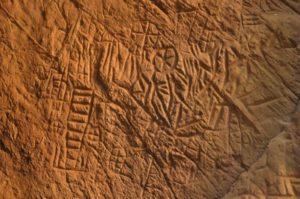



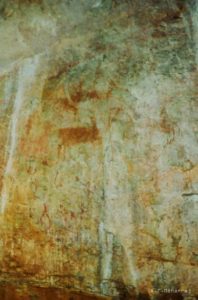
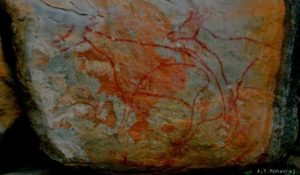
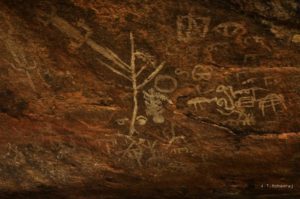

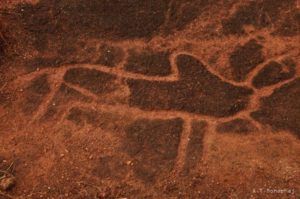
Respected sir,
I was preparing to conduct a research on ‘Ezhuthu Guha’ of Marayoor. I came across your article on rock art in kerala in the website “ALA” and would like to know a few details from you.
1.Is ‘Ezhuthu Guha, Ezhuthalai cave and as mentioned your article, ‘Ezhuthupara’ are the same?
2.If so, in the beginning of your article you stated that the rock art of Marayoor are mainly petrographs (paintings) but in the subsequent passages, you mentioned Ezhuthupara rock art is petroglyph (carvings).
3.Also what is your opinion on the study on Ezhuthupara. Will it be complete while studying individually or should rock shelters of Marayoor completely considered?
Hoping for your kind response.
George Varghese
M.A History Student
Central University of Karnataka
Kalaburagi
Thank you for this wonderful article.
As part of my own research on the Edakkal petroglyphs , I would like to pose the following questions
1. Can the Edakkal etchings/petroglyphs be read as a matrilineal arche-writing.
2.Isn’t the pre-Iron age muscular argument, that rules out female creativity due to lack of muscle power, raised elsewhere by other scholars, too pat and reductive.